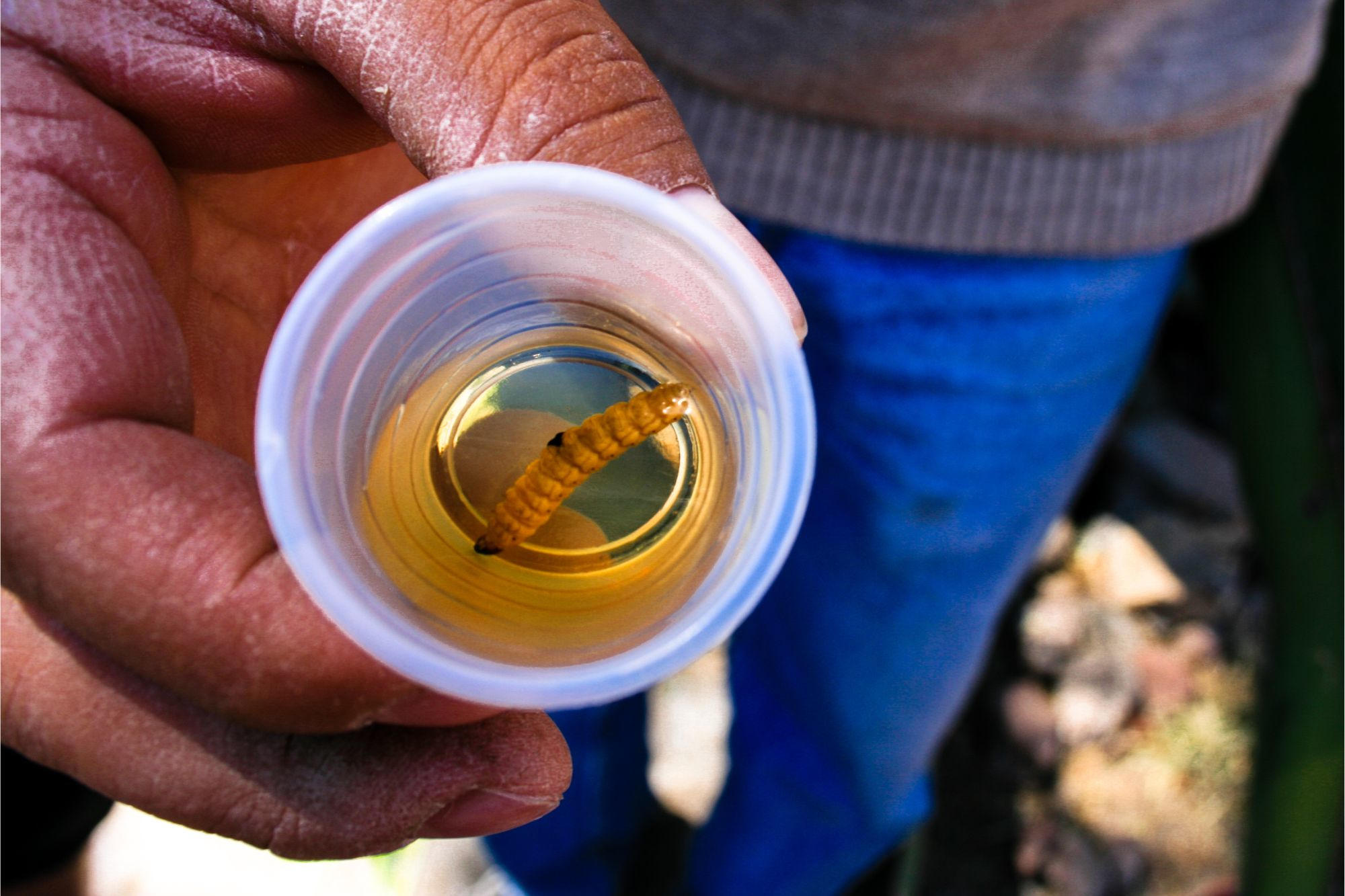Study published in Life and the Environment PeerJ They analyzed the types of caterpillars found in bottles of Mezcal, a distilled alcoholic beverage made from agave. Somewhat unexpectedly, the study found that all the caterpillars were from one species of moth, C. redtenbacheriIt is one of the most common edible insects in Mexico.
Mezcal is a distilled spirit produced from the cooked and fermented sap of cactus plants. The majority of mezcal drinks, including all types of tequila, are marketed as a pure distillate, but a few contain an unexpected addition: worms.
Referred to as gusanos de maguey in Spanish, which translates to agave worms, these strange companions aren’t really worms, but rather a type of insect larvae. The practice of incorporating these larvae into mezcal is relatively recent, as mezcal production has a rich history dating back to the first Spanish settlers in Mexico. However, maggots weren’t first introduced to the drink until the 1940s.
Since then, gusanos have helped boost mezcal’s popularity, but their identity has remained elusive. There is no consensus on the type of caterpillar used for mezcal or even if it belonged to one or more[{” attribute=””>species. They’ve been variously ascribed to moths, butterflies, and even a type of weevil.
“It’s relatively easy to broadly determine the kind of larva based on the shape of the head, but their identity has never been confirmed,” said Akito Kawahara, curator at the Florida Museum’s McGuire Center for Lepidoptera and Biodiversity. “This is probably because most biologists are not looking inside mezcal bottles.”

Mezcal is made from the boiled and distilled sap of various agave species. Credit: Charles Lemaire
In a new study, recently published in the journal PeerJ Life & Environment, Kawahara and his colleagues decided to pin down the identity of the mezcal gusanos. In 2022, they traveled to Oaxaca Mexico, which has been the center of mezcal production for hundreds of years. There, they visited distilleries and obtained as many different brands as they could find to ensure a diverse sampling of larvae.
There were very few distinguishing features that could be used to assign the specimens to a particular group or species; fortunately, mezcal makes an excellent preservative, preventing the decay of the larvae and their internal packets of DNA. The researchers successfully extracted and analyzed genetic material from 18 specimens, but the results they got back were unexpected.

Mezcal is a type of distilled alcoholic beverage that is made from the agave plant, which is native to Mexico. It is similar to tequila but is made from a wider variety of agave plants and is typically produced using traditional methods such as underground pit ovens and stone mills.
Since gusanos de maguey aren’t commercially farmed, the authors suspected that mezcal worms would likely be sourced from several unrelated species. This included a type of butterfly called the tequila giant skipper (Aegiale hesperiaris), which lays its eggs on agave plants. Their large, milky-white caterpillars parasitize several agave species, boring tunnels through the rigid, succulent leaves. The eponymous common name, combined with their white larvae — which match the color of many gusanos de maguey — marked them out as a primary suspect.
Instead, the DNA unequivocally identified all 18 specimens as the caterpillars of agave redworm moths (Comadia redtenbacheri), another type of agave parasite with rosy-hued larvae. The researchers suspect that accounts of white gusanos de maguey come from caterpillars that have been stored in alcohol for long amounts of time and have consequently leached their color.
The results add a sobering note to what is currently a boom in the international popularity of mezcal. According to a report by Straits Research, an independent analytical firm, the sale of mezcal is expected to increase by 22% in the next decade, reaching $2.1 billion in profits by 2030, riding a growing wave of interest in artisanal, ethically manufactured products.
Unlike tequila, which is mass-produced in industrial autoclaves, mezcal production continues to rely on small-scale facilities in Mexico’s arid countryside. Farmers roast the barrel-shaped agave cores in open fire pits or specialized kilns, then chop and pulverize the crisp stumps for fermentation and small-batch distribution. It’s unclear whether all mezcal distilleries and landowners will be able to sustainably scale up production to meet demand.
The fate of agave redworm moths is also uncertain. Maguey worms have been harvested as a delicacy for centuries, beginning with the Aztecs. But demand for the larva in Mexican culinary establishments has also seen an increase in recent years, to the extent that wild populations of these caterpillars are considered at risk of overharvesting.
“Agave worms are still fairly common, but the impact of mezcal becoming popular can have long-term negative effects on local populations because they are harvested in the wild,” Kawahara said.
Red agave caterpillars burrow deep into the core of their host plants, and collecting them often kills the agave. For production to scale with the growing market, it’s possible local harvesters may need to actively grow caterpillars on agave farms or find ways to produce them outside of their host plants.
Reference: “Mezcal worm in a bottle: DNA evidence suggests a single moth species” by Akito Y. Kawahara, Jose I. Martinez, David Plotkin, Amanda Markee, Violet Butterwort, Christian D. Couch and Emmanuel F.A. Toussaint, 8 March 2023, PeerJ.
DOI: 10.7717/peerj.14948

“Extreme travel lover. Bacon fanatic. Troublemaker. Introvert. Passionate music fanatic.”







More Stories
Prince Harry will return to Britain next month
Converting invisible dark matter into visible light
Ellen DeGeneres speaks out about talk show's 'devastating' ending: Reports